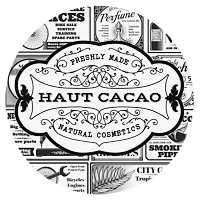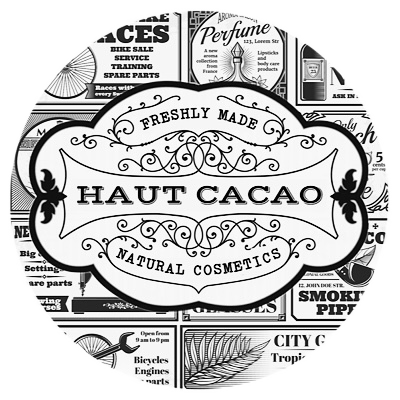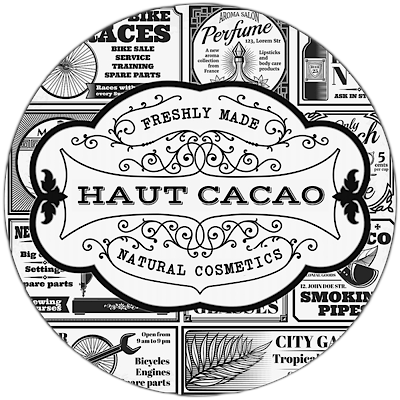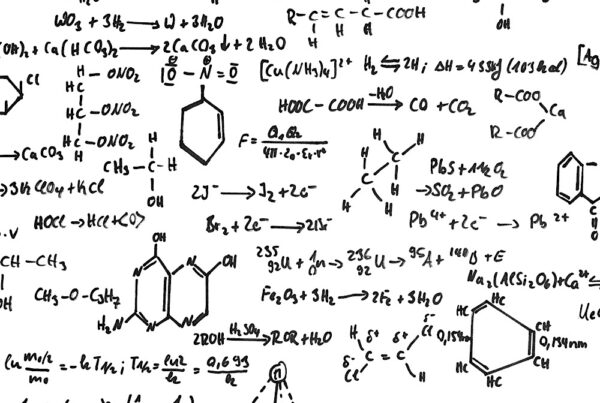Rancid. Even the word sounds kind of icky. Or at the very least, like a super-angry punk band. Either way, it’s definitely not how you’d want anyone to describe the food you’re eating or the skincare and makeup you’re wearing every day. The first step to side-stepping rancidity? Know your enemy.
Lately, I have been extra-passionate about acquiring total sourcing control from the smallest, hard-to-find producers of raw plant oils on earth and choosing only the most stable, hardy plant oils. This year a childhood friend shared the news of her cancer coming back. She wanted to switch up her makeup products before her chemo treatments started. She told me how she had opened up her concealer the other morning in her bedroom. Her husband, who was in the same room but not even close to her, made a face and strongly objected to her applying the concealer to her skin because of the strong, off-putting smell that filled the room the moment she opened the tiny little tube. Because of other similar stories like this, a slow and curious quest of tracing the origin of each ingredient that goes into my formulas has become an urgent one. It has inspired me to really hone in on my craft and incorporate only the healthiest, most stable plant and fruit oils. I now feel like a seasoned connoisseur of the freshest plant and fruit oils. The colour and smell tell me everything I need to know.
Now, when I say, know your enemy, you need to first know if you are dealing with a whole plant or just a constituent of that plant. I went into depth on this topic of rancidity in two previous posts. I will include the links at the bottom of this post but if you want the shortened version, just watch this video. Laurel explains it perfectly!
Also, I couldn’t help wondering just how decadent a cheek cream tint would feel if it was handcrafted from the most beautiful extra-virgin olive fruit on earth. I specifically had one in mind which I had come across in my search. It won the BIOL PRIZE for the best organic extra-virgin olive oil worldwide, awarded according to the international jury panel test and the results of a chemical analysis. Raising the bar on the quality of my products means improving the health of each of my clients, family, and friends as well as myself. I am usually moving in the direction of trying to pack more and more healing ingredients into a formula. However, the last few months I have reflected on some advice I received when I was younger and just starting out with my line.
the best advice I ever received
One piece of advice actually came from a chemist in Chicago who was teaching me how to formulate a lipstick. It was geared towards ‘chemistry’ but I found that it applied to every single area in my life from that moment on. She said, “Before we begin, I want you to forget everything you think you know and just start fresh.” Following that simple advice seemed to help to remove my ego from the whole ‘equation’ and I was able to absorb more knowledge in every new experience when I kept those words in mind. The other piece of advice I received from a life coach. I had been complaining to him that I felt I needed to learn how to be more productive with my day so that I could do more. He calmly replied, “Maybe you need to do less.” Both of those simple suggestions helped me in so many different situations in the last twenty years. I have been hearing those words again in my head often over the last year. By choosing to do less, I have produced more quality out of my work and out of life in general. I learned not to compare what I was doing to what someone else was doing. That is where we so often run into trouble. So, instead of adding to my list of ingredients, I have chosen less – only the freshest whole plants and superfoods – and nothing else.
what’s in it for you?
Just as I had anticipated, when I began experimenting with the finest, award-winning olive oil to formulate a product, there was a world of difference to me in the feel of the product, the incredible glow on the skin, as well as the healing properties. And I have to say, I was blown away because I have been working with these oils for decades, or what I thought were the same oils. What you may notice first though is increased coverage without it looking or feeling heavy. I thought my formulas were already pretty great, but I noticed that visibly, these new formulas all looked more natural and they are so buttery smooth on a whole other level, so much so that I just want to play all day with them. They really seem to meld into the texture of the skin so that they are even more of a ‘second skin’ while still having smooth, full coverage over hyperpigmentation and redness and longevity. I have worked with quality cosmetic ingredients since I started my line in 2002 but I am no longer accepting anything less than this newfound, wildcrafted, food grade quality. At t the same time, I am able to support other small family-run businesses. Now that I have a tiny but beautiful collection of the freshest, purest oils and butters right at my fingertips, I am giving you the option to go with your own intuition in choosing which one is best for you. Each plant and fruit oil has it’s own healing properties as well as its own vunique texture, slightly different finish, and natural scent. I honestly love them all equally but for different areas of the face. I have simplified each formula by choosing only the most stable of oils so that you can experience the unique qualities of each and you can also more easily avoid any ingredients that haven’t agreed with your skin in the past. I do strongly encourage you to try a sample of a formula that you have been sensitive to in the past. Chances are that your skin was reacting to the toxins in a rancid oil instead of experiencing a sensitivity to a truly unrefined plant or fruit oil. What is also important to note from a makeup artist standpoint is that when you choose a specific plant oil or butter, you are choosing a specific texture of the finished product. Texture is just as important as the coverage and colour. You want to choose one that is suitable for the purpose(s), your present skin type, and for the present season you are in, as well as the climate you are in, or travelling to. I can help you choose the right one through a personalized online consultation.
Here is a short description (also on each product page) of each plant oil texture which translates into what your concealing cream, cream brightener, cream tint, and balm texture will be:
raw coconut butter formula – a rich, creamy texture with a glowy finish
sugarcane squalane formula – more of a lightweight cream than the raw coconut butter formula and most glowy finish of these formula choices
cold-pressed red raspberry formula – like sugarcane, this is more of a lightweight cream with a more subtle glow than the sugarcane squalane and raw coconut butter formula choices
extra-virgin olive fruit oil formula – a lightweight cream with a more matte finish than the above three choices
extra-virgin castor oil formula – cold-pressed and hexane-free, this formula is the most matte, powdery finish of these formula choices while still being hydrating
if you already had a favourite formula:
raw coconut butter formula – similar most to my coconut-based formulas
sugarcane squalane formula – similar most to my coconut-free formulas
cold-pressed red raspberry formula – similar most to my raspberry elixir or if you want extra sun protection
unrefined beauty
To get the most out of these pure ingredients, it is important to do a weekly exfoliation. I highly recommend my purifying cleanser as it provides a very fine microdermabrasion to thoroughly slough off dead skin cells and remove every last bit of debris on the surface of the skin. You will notice your bare skin feels like a newborn’s and your makeup looks 90% better. You will not want to go anywhere without it, trust me!.
Personally, I like the creamier texture formulas for my foundation and a more matte cream formula texture for brighteners, concealing creams, and my eye, cheek, and lip colours. If you need a recommendation on what formulas would be best for you, just click on the question mark in the bottom right corner of my website. Let me know what sensitivities or allergies you have, your skin type, and the type of climate you live in.
unique application
these new solid cream formulas need to be activated with the body temperature of your fingers to ‘wake up’ the formula or melt it just a little. If you already use my dewy hdd, you will know what I mean for the most part as that particular formula melts into the skin the most. These newest formulas are more solid so I recommend starting with clean fingers always and tracing a few circles in the pot of cream coverage or colour until you feel it softening up. If you are using a detailed brush instead of your fingers because you are applying the product in fine detail to your eyes or brows, you can still warm it up with your fingers. The creaminess takes your sensory pleasures to another level when working with these textures. I know I sounds like a broken record but I am warning you, you will just want to play.
rancid
The word rancid is used for fats and oils that have become unstable and created free radicals, which act as toxins in your body. Rancid fat = free radicals = toxic. Fats can turn rancid from exposure to heat, light and air.
Too Many Products Contain Rancid Oils…
Not All Oils Are Created Equal
As a maker, I am always curious about other brands’ ingredients, their processes and packaging. I love to see, touch, and smell what other people are doing. I know it looks glamourous from the outside, but making products that you can be proud of, on the inside, is a lot of crucial decision making, hard work, and expense. Good skin care products will contain a fair amount of oil in them. Oils are usually about half of the ingredients for face creams and body lotions, while a good serum is almost all, if not all, oil. So, with such a concentrated amount of one ingredient in a product, it is important that you as a consumer be educated about the importance of the quality of that ingredient.
Cold pressed oils retain their nutrient value, including their innate oxidative protectant… vitamin E! Vitamin E is a fat soluble nutrient that has antioxidant properties, which protect cells from the effects of free radicals. Free radicals are toxic byproducts of oxygen metabolism that can cause damage to living cells and tissue in our body. It is the nutrients in our foods that protect our cells from the damage of free radicals. Studies have also shown that Vitamin E taken internally and applied topically are effective in protecting the skin against the early damage introduced by ultraviolet radiation.
If the oil ingredients in the products you are using are not natural, cold pressed oils, the vitamin E content will be too low to protect the product from easily becoming rancid. Add to this, products that are put in clear glass containers, or plastic, are even more at risk. Heat and sunlight are a big factor in oxidizing oil ingredients.
Rancid oils pose a big health risk and should be considered toxic. When rancid oils are eaten or applied to the skin, free radical damage to the cells is increased. It is well known in natural medical circles that rancid oils are considered carcinogenic, pro-inflammatory, and very toxic. Most oils should have very little odour. The nut oils should have a sweet, nutty smell. The best description of the smell of a rancid oil is to think about the smell of a melting crayon. Rancid oils can also sometimes have a sharp, unpleasant, metallic, or bitter smell.
With my newest formulas, you may notice a light coconut scent with the raw coconut formulas and a light olive scent with the olive oil formulas. When fresh and unrefined oils are used, there is no stickiness to the formula. Another sign of rancidty being present in a makeup product is a playdough-like smell. The tricky part is that if your products are heavily masked with ‘strong parfums’ or essential oils. Because it may be difficult to detect rancidity by smell alone, also take note of the texture of a product. You may notice a growing sticky texture or a sticky residue when you close the container. It is best to store your makeup somewhere cool and dark. Try to avoid humid bathrooms or storing your makeup where temperatures change drastically.
The most highly refined (meaning most exposed to heat, light and air during processing) polyunsaturated oils are canola, sunflower, safflower, corn and soy. Although polyunsaturated fats are the most likely to become rancid in processing, all forms of fat can become rancid. Purchasing skincare and makeup products containing only unrefined oils is very important. I strongly recommend always storing my formulas at room temperature and avoid direct exposure to sunlight and excessive heat.
a deep dive into pufas with laurel skin
the truth about pufas






